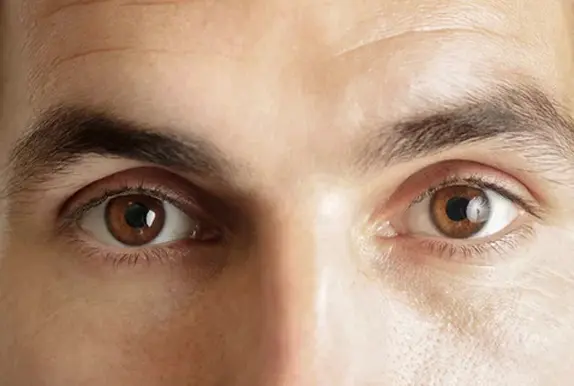Ptosis, or drooping of the upper eyelid, can affect one or both eyes and occurs in people of all ages. While it may appear as a simple cosmetic concern, ptosis is often a sign of an underlying medical or anatomical issue. For patients, understanding what causes ptosis is key to determining the right treatment approach—whether surgical or non-surgical—and to addressing any related health conditions.
This guide will walk you through the different types and causes of ptosis, with an emphasis on the medical conditions that may be involved.
What Is Ptosis?
Ptosis (pronounced TOE-sis) refers to a droop of the upper eyelid that can range from mild to severe. In some cases, it may only affect appearance, but in others, it can impair vision, cause eye strain, or affect daily function.
Symptoms Include:
- A visibly lowered eyelid
- Eye fatigue or strain
- Head tilt (to compensate for vision obstruction)
- Difficulty with tasks like reading, driving, or using screens
- Uneven eyelid height (asymmetry)
Types of Ptosis
Understanding the type of ptosis you have helps determine the underlying cause and best course of treatment. The most common types include:
- Congenital Ptosis – Present at birth
- Acquired Ptosis – Develops later in life, often due to aging, trauma, or illness
- Neurogenic Ptosis – Caused by nerve issues
- Myogenic Ptosis – Caused by muscle disorders
- Mechanical Ptosis – Resulting from weight pulling down the lid
- Traumatic Ptosis – Caused by injury or surgery
Common Causes of Ptosis in Medical Patients
1. Age-Related (Involutional) Ptosis
- Most common cause in adults
- Due to weakening or stretching of the levator muscle or its tendon (aponeurosis)
- Eyelid gradually droops with age or from repeated eyelid rubbing, eye surgery, or contact lens wear
Who’s at risk?
Adults over 50, especially those with a history of eye procedures
2. Neurological Disorders
A. Third Cranial Nerve (Oculomotor Nerve) Palsy
- This nerve controls eyelid and eye muscle movement
- Damage from stroke, aneurysm, brain tumor, or trauma can cause sudden, severe ptosis
- Often associated with double vision and abnormal eye movement
B. Horner’s Syndrome
- Affects nerves supplying the eyelid and pupil
- May result from stroke, neck trauma, lung tumor (Pancoast tumor), or carotid artery dissection
- Often presents with mild ptosis, smaller pupil, and decreased facial sweating
C. Myasthenia Gravis
- Autoimmune disorder causing muscle fatigue
- Ptosis often worsens with activity and improves with rest
- May come and go throughout the day
- Frequently affects both eyes, sometimes with double vision
Key sign: Variable eyelid droop that improves after rest or medication (like edrophonium)
3. Muscle Disorders (Myogenic Ptosis)
A. Congenital Myogenic Ptosis
- Caused by poor development of the levator muscle
- Present at birth
- Eyelid may not move much during blinking or looking up
B. Chronic Progressive External Ophthalmoplegia (CPEO)
- A mitochondrial disease that gradually affects eyelid and eye movement
- Usually appears in young adults
- Associated with other symptoms like difficulty moving the eyes or fatigue
4. Mechanical Ptosis
- Occurs when something physically weighs the eyelid down
- Causes include:
- Eyelid tumors or cysts
- Excess skin or fat (dermatochalasis)
- Inflammation or swelling
- Scarring or adhesions from previous surgery or injury
Treatment: Typically surgical once the underlying issue is identified and managed
5. Traumatic Ptosis
- Caused by direct injury to the eye or eyelid
- Can result from:
- Car accidents
- Sports injuries
- Surgery (especially blepharoplasty or cataract surgery)
Damage to:
- Levator muscle
- Tendon (aponeurosis)
- Nerves supplying the eyelid
6. Congenital Ptosis
- Present at birth, usually due to a poorly functioning levator muscle
- May affect one or both eyes
- Can lead to amblyopia (lazy eye) if not treated early
Early diagnosis is critical to prevent long-term vision problems in children.
7. Other Medical Conditions Associated with Ptosis
- Diabetes – Can cause neuropathy, including third nerve palsy with ptosis
- Multiple sclerosis (MS) – May cause ptosis along with other eye movement disorders
- Graves’ disease or thyroid eye disease – Can lead to swelling and muscle dysfunction
- Cancer – Tumors in the brain, orbit, or neck can disrupt eyelid nerves or muscles
- Botox complications – If injected too close to the eyelid, Botox can temporarily weaken the levator muscle
When to See a Doctor
You should seek medical attention if you experience:
- Sudden-onset ptosis, especially with double vision or headache
- Ptosis that worsens throughout the day
- New or worsening neurological symptoms
- A visible lump or mass on the eyelid
- Difficulty keeping your eye open while driving, reading, or walking
Diagnosis: What to Expect
To identify the cause of ptosis, your doctor may perform:
- Comprehensive eye exam
- Visual field testing to determine how much vision is blocked
- Eyelid measurements (MRD1, levator function)
- Neurological evaluation if nerve or muscle disorder is suspected
- Blood tests or imaging (MRI/CT) if an underlying condition is suspected
Conclusion
Ptosis is more than just a droopy eyelid—it’s often a sign of a deeper issue involving the muscles, nerves, or surrounding structures. For medical patients, understanding the specific cause of ptosis is essential for guiding treatment and improving outcomes. Whether it’s managing an underlying condition or pursuing corrective surgery, early diagnosis and targeted care can help restore both function and quality of life.




